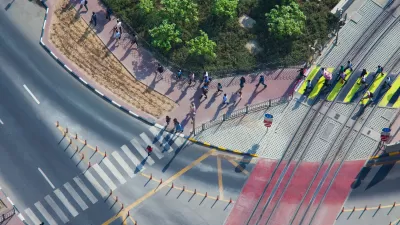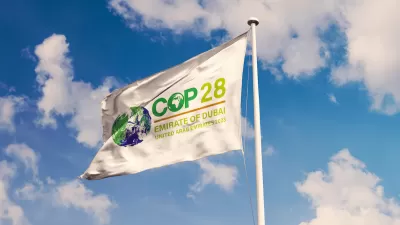Columnist Blair Kamin says that the Obama presidency puts a nail in the coffin of starchitecture, and introduces an age of sustainable buildings and an emphasis on infrastructure.
"Rarely do events so boldly bracket the death of one design era and the dawning of another as they have in recent days. On Jan. 14, the developer of a kilometer-high skyscraper in the Persian Gulf playground of Dubai announced he was shelving the project, the mixed-use Nakheel Tower, which would have been as tall as three John Hancock Centers stacked atop one another.
Then, six days later, Obama issued his blueprint for recovery: The nation 'will act-not only to create new jobs, but to lay a new foundation for growth,' he said. 'We will build the roads and bridges, the electric grids and digital lines that feed our commerce and bind us together.'
With the Nakheel Tower, the Chicago Spire and other wannabe icons stopped dead in their tracks and with the new president shining a spotlight on anonymous but essential public works, it's clear that the deepening recession has brought us to something more than just a pause. It's looking more like a pivot point. Or at least it could be if Obama delivers on his promise to reshape the contours of our metropolitan areas as well as revive the economy."
FULL STORY: Goodbye, icons; hello, infrastructure

Maui's Vacation Rental Debate Turns Ugly
Verbal attacks, misinformation campaigns and fistfights plague a high-stakes debate to convert thousands of vacation rentals into long-term housing.

Planetizen Federal Action Tracker
A weekly monitor of how Trump’s orders and actions are impacting planners and planning in America.

San Francisco Suspends Traffic Calming Amidst Record Deaths
Citing “a challenging fiscal landscape,” the city will cease the program on the heels of 42 traffic deaths, including 24 pedestrians.

Defunct Pittsburgh Power Plant to Become Residential Tower
A decommissioned steam heat plant will be redeveloped into almost 100 affordable housing units.

Trump Prompts Restructuring of Transportation Research Board in “Unprecedented Overreach”
The TRB has eliminated more than half of its committees including those focused on climate, equity, and cities.

Amtrak Rolls Out New Orleans to Alabama “Mardi Gras” Train
The new service will operate morning and evening departures between Mobile and New Orleans.
Urban Design for Planners 1: Software Tools
This six-course series explores essential urban design concepts using open source software and equips planners with the tools they need to participate fully in the urban design process.
Planning for Universal Design
Learn the tools for implementing Universal Design in planning regulations.
Heyer Gruel & Associates PA
JM Goldson LLC
Custer County Colorado
City of Camden Redevelopment Agency
City of Astoria
Transportation Research & Education Center (TREC) at Portland State University
Jefferson Parish Government
Camden Redevelopment Agency
City of Claremont





























